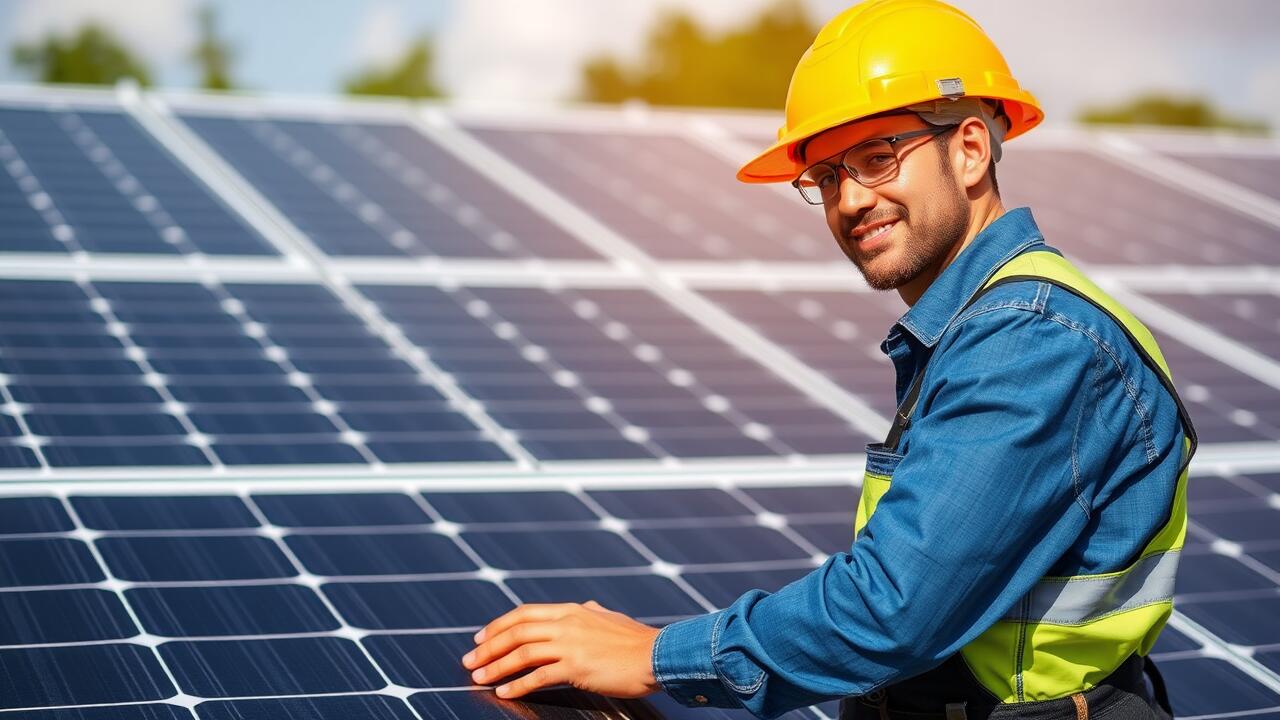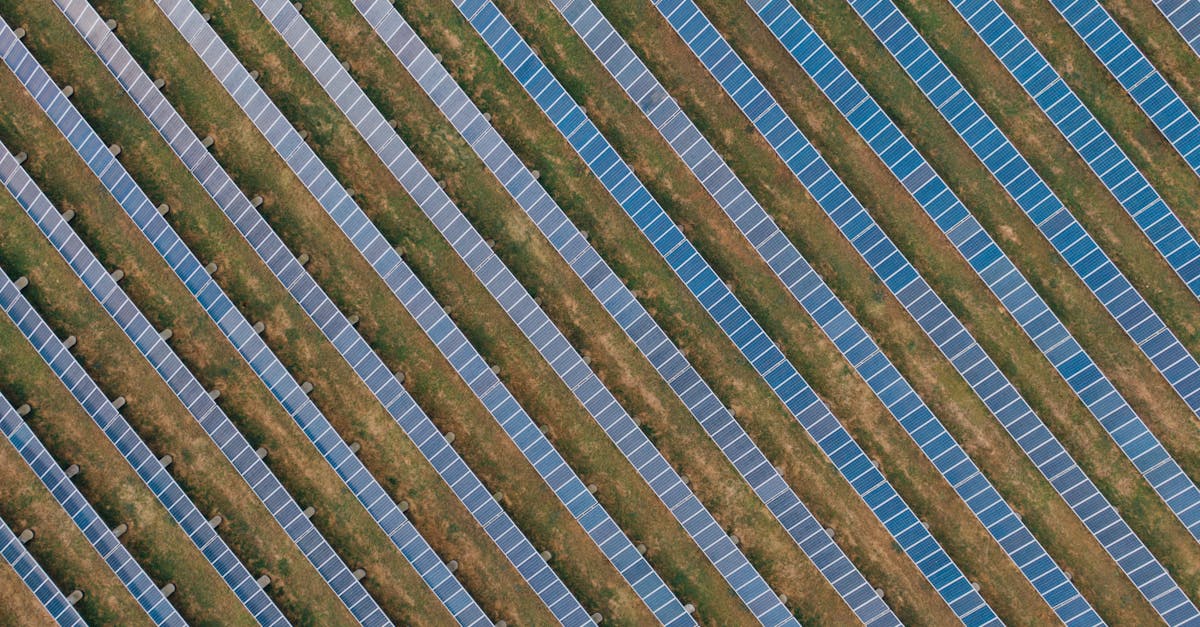
Determining the Size of Your Solar System
Determining the size of your solar system requires a thorough understanding of your energy consumption. Begin by reviewing your electricity bills to identify your average monthly usage measured in kilowatt-hours (kWh). This figure is essential in assessing how much energy your solar panel system design needs to generate. Consider factors such as seasonal variations in energy use and any potential future increases, like the addition of electric vehicles or home extensions, which could further influence your requirements.
Once you have a clear picture of your energy needs, you can start calculating the appropriate system size. The solar panel system design will depend on the amount of sunlight your location receives, which affects the efficiency of energy production. Conducting a site assessment will help determine factors such as roof orientation, shading, and available space. This information will guide you in selecting solar panels and determining the number required to meet your energy goals effectively.
How to Estimate System Size Based on Energy Needs
Estimating the size of your solar panel system design begins with understanding your energy consumption. Look at your electricity bills for the last year to determine your average monthly usage in kilowatt-hours (kWh). This data provides a solid foundation for planning. Consider seasonal variations in consumption, as energy use may fluctuate throughout the year due to factors like heating and cooling requirements.
Next, assess the solar irradiance in your location, which refers to the amount of sunlight that strikes the earth’s surface. This measurement varies by region and directly affects the efficiency of your solar panel system design. By combining your energy needs with local solar potential, you can calculate the total wattage required from your solar panels. This information will guide you to choose the right number of panels and their specifications to generate sufficient power to meet your demands.
Financing Your Solar Installation
Financing your solar installation can significantly impact the overall cost and the return on investment. There are several options available to homeowners, including solar loans, which allow you to spread the cost over several years while benefiting immediately from energy savings. These loans often come with competitive interest rates and flexible repayment terms. Additionally, many local and national incentives can help offset the initial expenditure. Grants or tax credits may be available depending on your location and the specific details of your solar panel system design.
It is essential to thoroughly research financing options to make an informed decision. Many financial institutions offer solar-specific financing products tailored to the needs of those investing in renewable energy. Understanding the various terms and conditions associated with these loans will aid in selecting an option that aligns with your financial goals. Assessing potential savings and incentives can contribute to a clearer picture of the overall costs involved in your solar panel system design.
Exploring Options for Solar Loans and Incentives
Financing a solar panel installation can often be a significant consideration for homeowners. Exploring options for solar loans becomes essential as many financial institutions offer products specifically designed for renewable energy projects. These loans typically feature lower interest rates and extended repayment terms, making it easier to manage the upfront costs associated with purchasing and installing a solar panel system design. Moreover, some lenders may even provide tailored packages that combine loans with additional incentives.
Beyond loans, various government incentives can substantially reduce the overall expenditure. These may include grants, tax credits, or rebates that encourage the adoption of solar energy. Understanding the available incentives in your area is crucial as they can vary significantly. Knowing how these financial aids relate to your solar panel system design can help in creating a more cost-effective budget, ultimately making the transition to solar energy more accessible and appealing.
Understanding the Installation Process
The installation process for a solar panel system design involves several critical steps that ensure efficiency and safety. After determining the appropriate system size based on energy usage and securing financing, the first stage typically includes a site assessment. This assessment evaluates factors like roof orientation, shading, and structural integrity to ensure optimal placement of the solar panels. Following this, the installation team prepares the site, which may involve obtaining necessary permits and arranging for utility approvals.
Once the groundwork is laid, the actual installation of the solar panels can commence. Mounting systems are installed to secure the panels, and the solar panels are then placed, ensuring they are optimally aligned for maximum sun exposure. Electrical connections are made to integrate the solar system with the existing power supply, followed by a series of tests to confirm everything is functioning properly. After successful installation, the system typically undergoes inspections, which may involve local regulatory bodies, ensuring compliance with health and safety standards.
Key Steps in the Solar Panel Installation
The installation of a solar panel system involves several key steps that require careful planning and execution. Initially, a thorough assessment of the site is conducted to determine the optimal positioning of the panels. This includes evaluating the roof's structure, angle, and orientation, as these factors significantly influence the system's efficiency. Additionally, the energy needs of the household must be reviewed to ensure the solar panel system design meets both current and future requirements.
Once the site assessment is completed, the next phase involves procuring the necessary permits and approvals from local authorities. This step is crucial to ensure compliance with regulations and standards. Following the acquisition of permits, the installation team can proceed with mounting the solar panels and connecting the electrical components. After installation, a rigorous testing process is undertaken to confirm that everything functions correctly, ensuring the system is ready for operation and can efficiently harness solar energy.
FAQS
What factors should I consider when determining the size of my solar system?
When determining the size of your solar system, consider your energy consumption, the amount of sunlight your location receives, the orientation and angle of your roof, and any potential shading from nearby trees or buildings.
How can I estimate my energy needs for a solar system?
To estimate your energy needs, review your past electricity bills to determine your monthly energy consumption in kilowatt-hours (kWh). This will help you understand how much energy your solar system needs to generate to cover your usage.
What financing options are available for solar installations?
Financing options for solar installations include solar loans, home equity lines of credit, cash purchases, and leasing agreements. Additionally, many regions offer incentives, grants, or tax credits that can help offset the cost of solar systems.
Are there any government incentives for installing solar panels?
Yes, many governments offer incentives for installing solar panels, such as tax credits, rebates, and grants. These incentives can significantly reduce the overall cost of your solar system, so it's important to check what is available in your area.
What are the key steps in the solar panel installation process?
The key steps in the solar panel installation process typically include a site assessment, designing the system, obtaining permits, installing the panels and inverter, connecting to the grid, and finally, conducting inspections to ensure everything is working correctly.


